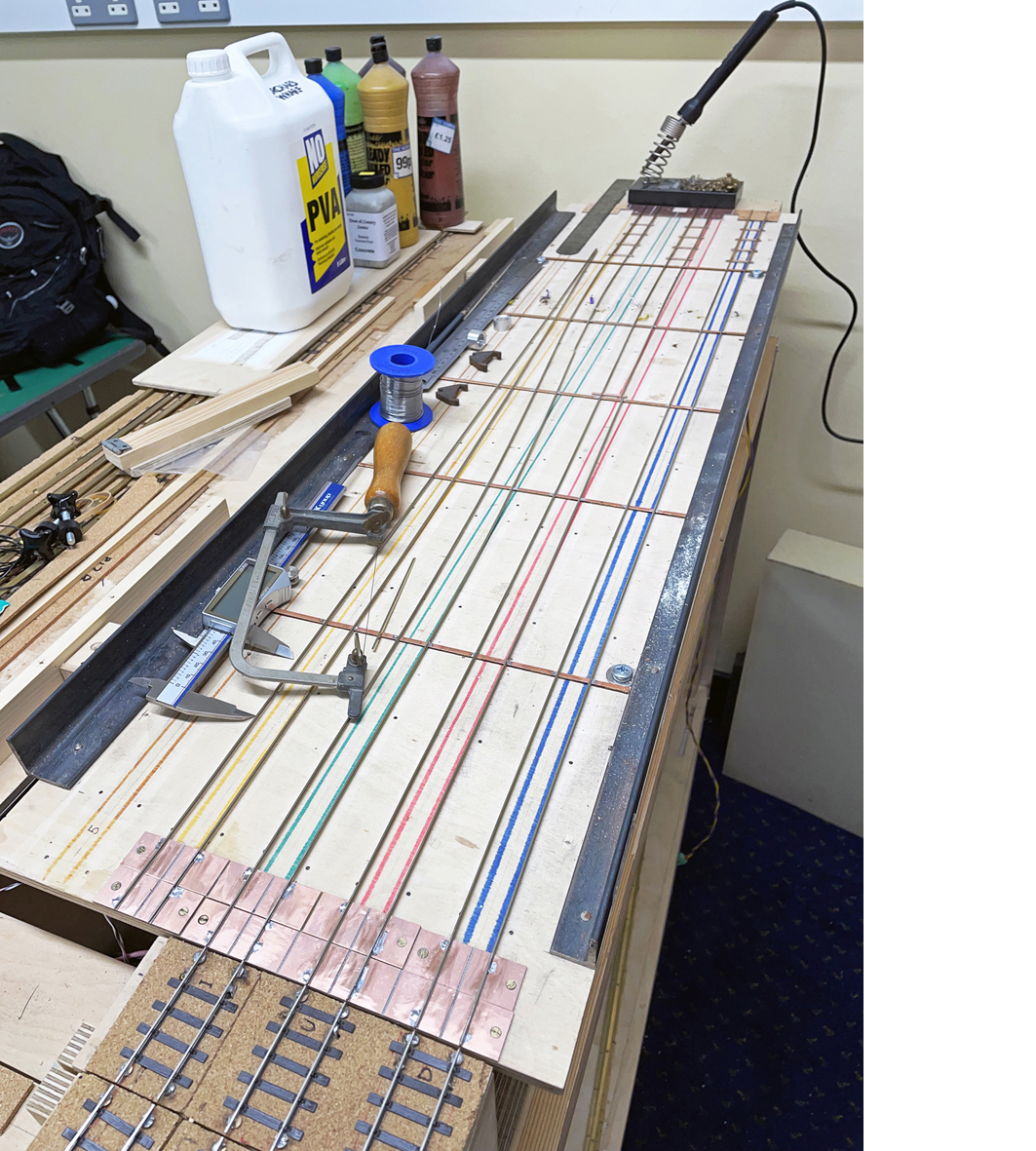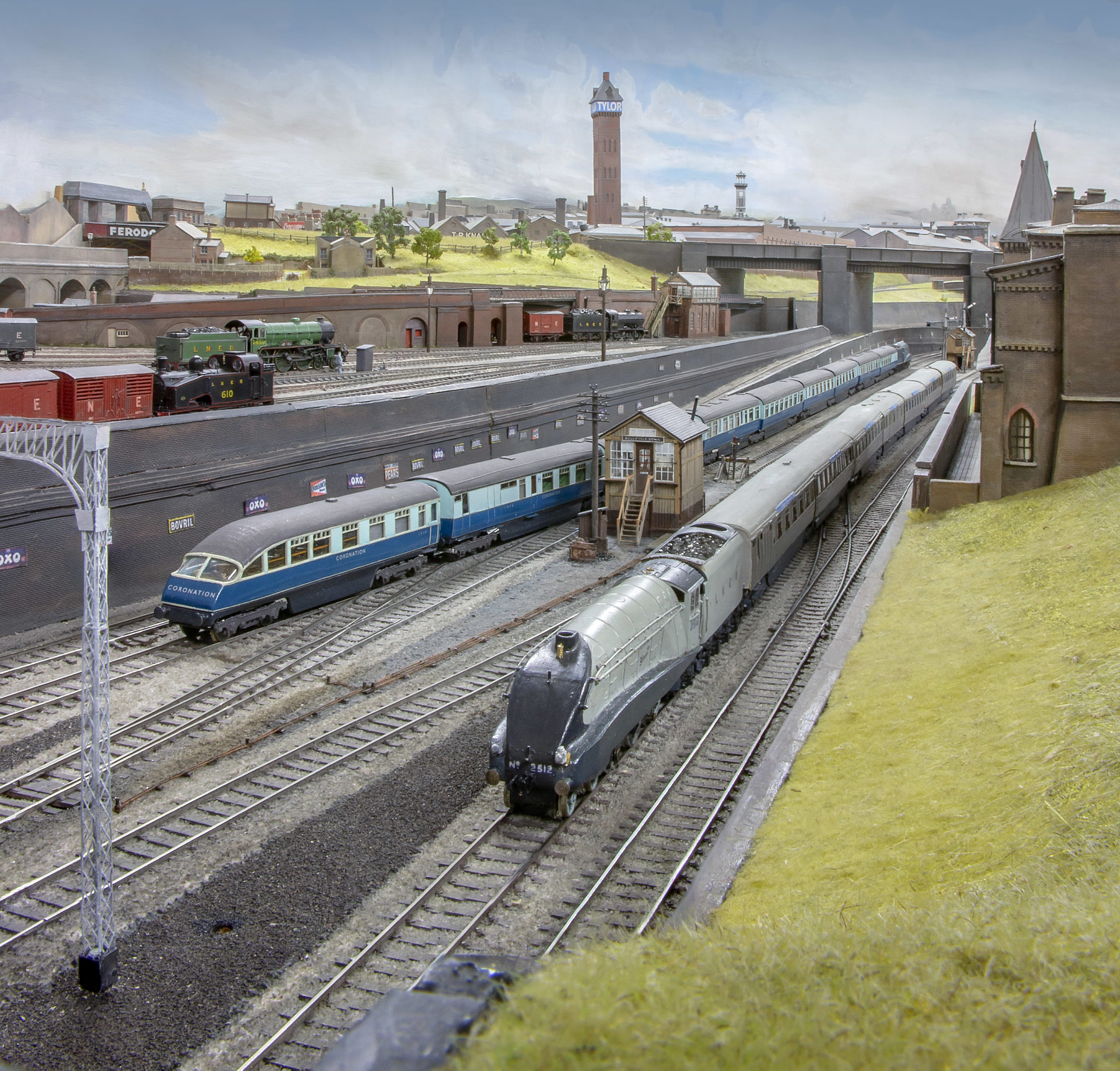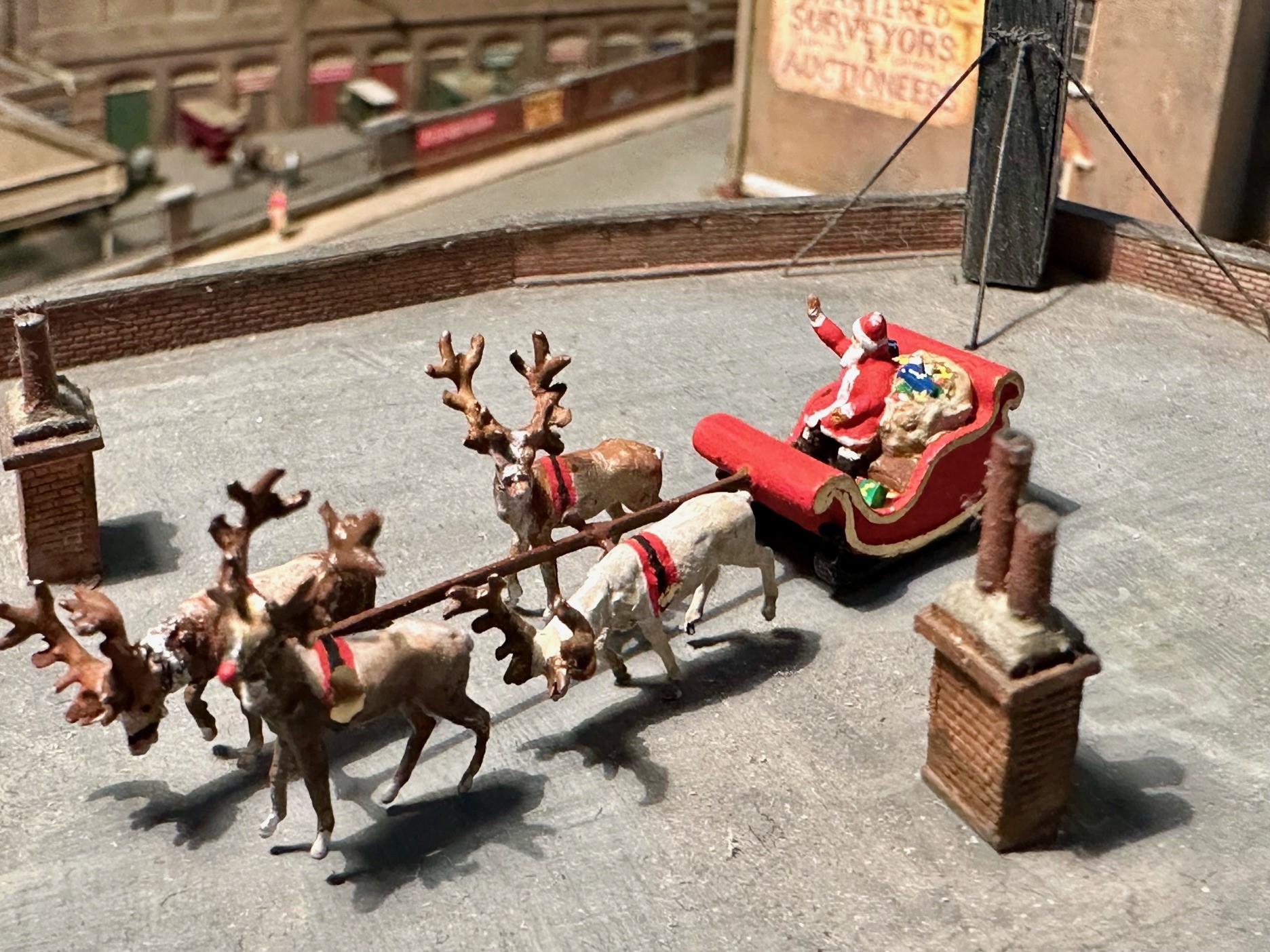Kit building brass Mk1 coaches – before the RTR versions arrive
Tom Cunnington
28th December 2023
6 minutes

The Great Northern (King’s Cross) suburban services in the 1950s-70s were characterised by the ‘short’ Mark 1 non-gangway coaches – normally hauled by Class 31 diesels. The majority of coaches and trains were formed of compartment third/second class coaches, as manufactured for several years by Bachmann in OO, and these would have formed the bulk of services to and from Minories. The outer suburban services were operated with Composite Lavatory ‘CL’ and Second Lavatory Open ‘SLO’ coaches – with very different and obvious window layouts – and I wanted a set to give a little variety to the coaching stock even though they didn’t normally serve the widened lines.
Although these are about to be produced in 4mm scale RTR by Accurascale, until then the only option for the CL was to build them from etched brass components supplied by Bill Bedford (the etched sides) and Comet Coaches (the rest). The SLO had been available as a plastic kit from DC kits, but following the withdrawal of that range the only option was brass. This blog shows how I went about building a four coach rake for Minories, including a Brake Second coach to ensure the rake looked the same.
The sides come flat, so the first job is to add the curvature. This can be achieved in a couple of ways, but I’ve invested in a rolling mill that enables the coach sides to be gradually rolled back and forth to give the right amount of curve
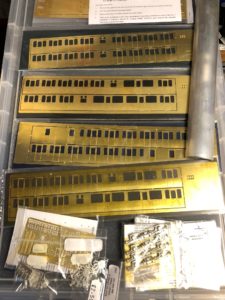
![]()
![]()
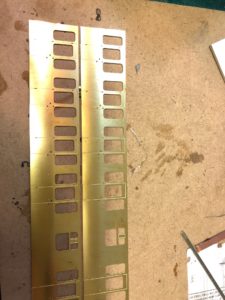
![]()
![]()
![]()
![]()
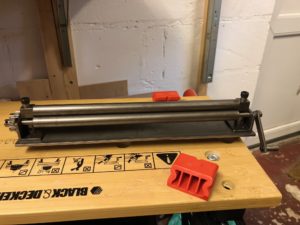
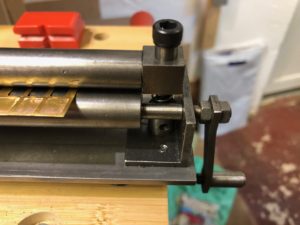
Once the curve is right (judged by using the coach ends to check), I drilled out the holes for the door furniture, and cleaned off any remaining tabs on the top and bottom.
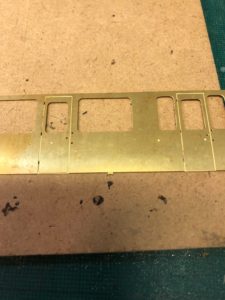
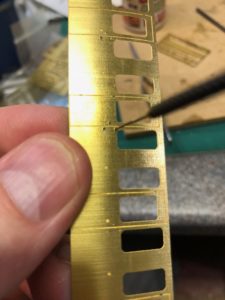
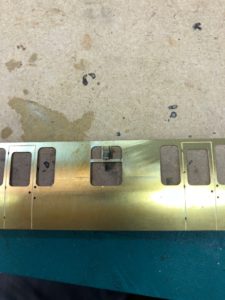
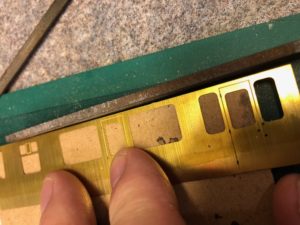
Next up is soldering in place the hinges, handles and knobs. I clamped the sides vertically and used tweezers to hold the components in place whilst soldering. Then when that was done, I ground off the solder inside the coach so that the glazing could sit flush
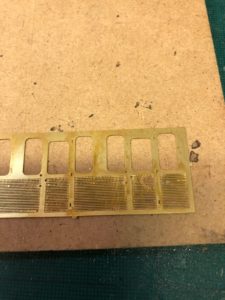
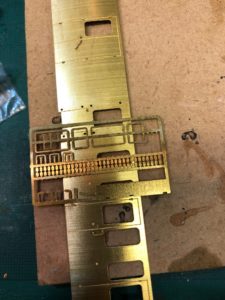
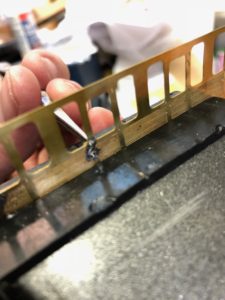
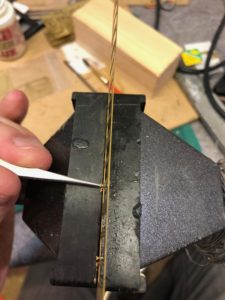
![]()
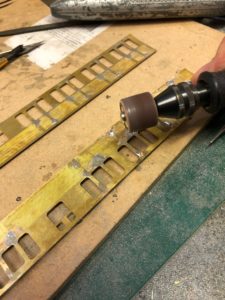
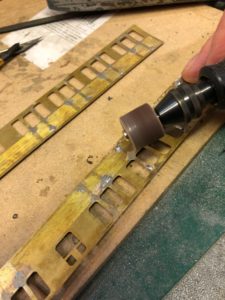
Once satisfied, I followed the Comet instructions in making up the structure of the ends, and then soldering the sides to the ends. The only difference is that I do the reverse for the body / chassis mounting and have the bolt mounted inside the body, so it can be used to anchor the Kadee coupling.
![]()
![]()
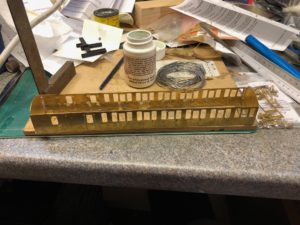
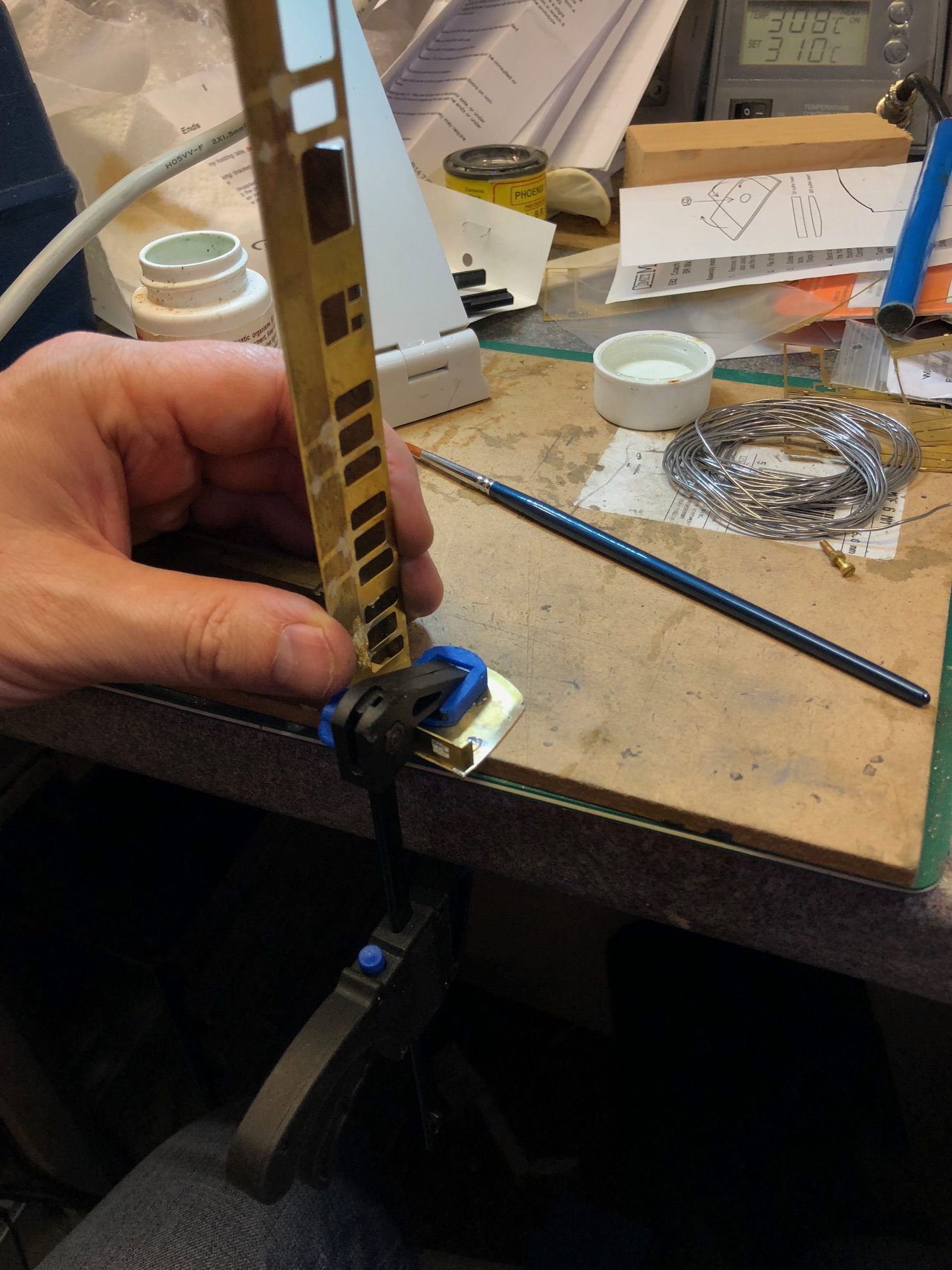
Roofs come next, cut to length and marked out for the vents and water fillers. The fillers are made of wire with Alan Gibson handrail mounts. I made use of the Club pillar drill to drill to drill the holes out, then glued the components in place.
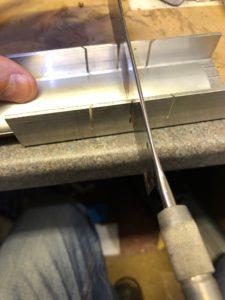
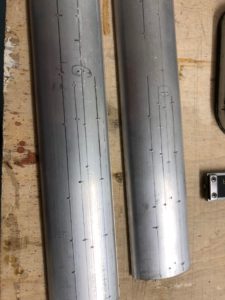
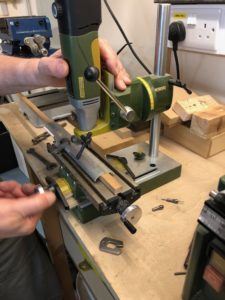
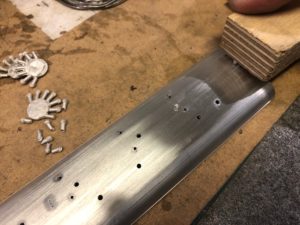
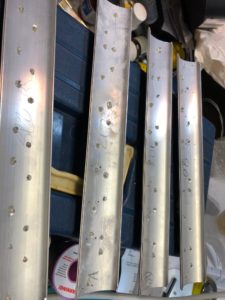
and then the roofs glued to the bodies with epoxy
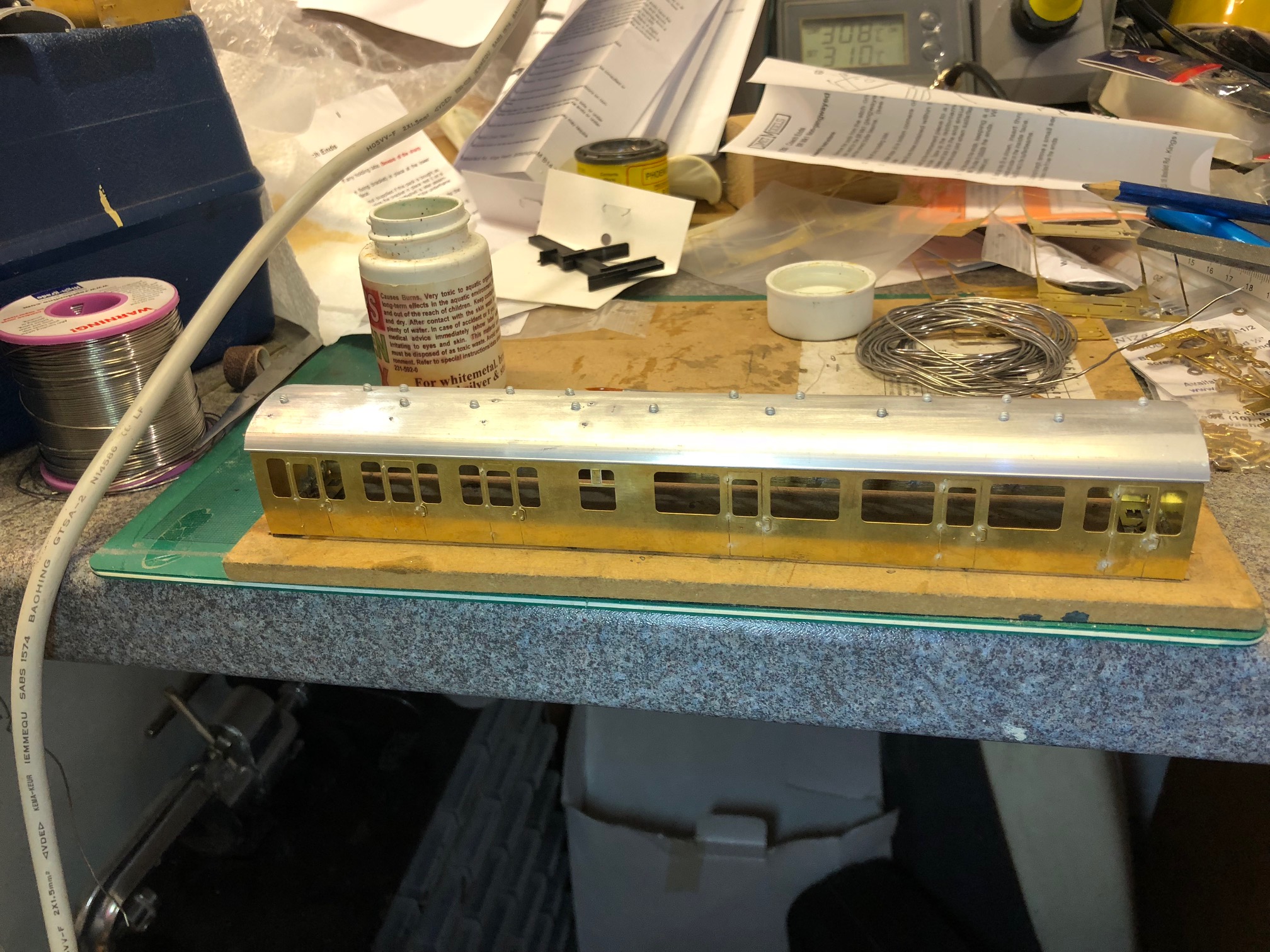

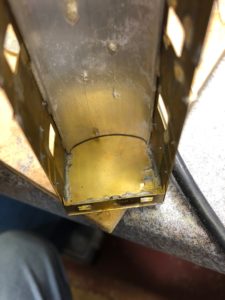
Once satisfied all was straight, and they were running freely being propelled around a test track, I cleaned the bodies and chassis with Cif and a toothbrush before priming them with Halfords spray primer, followed by the BR blue and finally (with masking) the roofs.
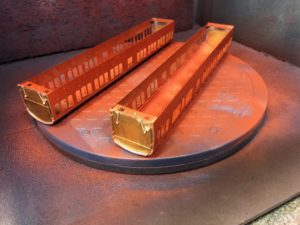
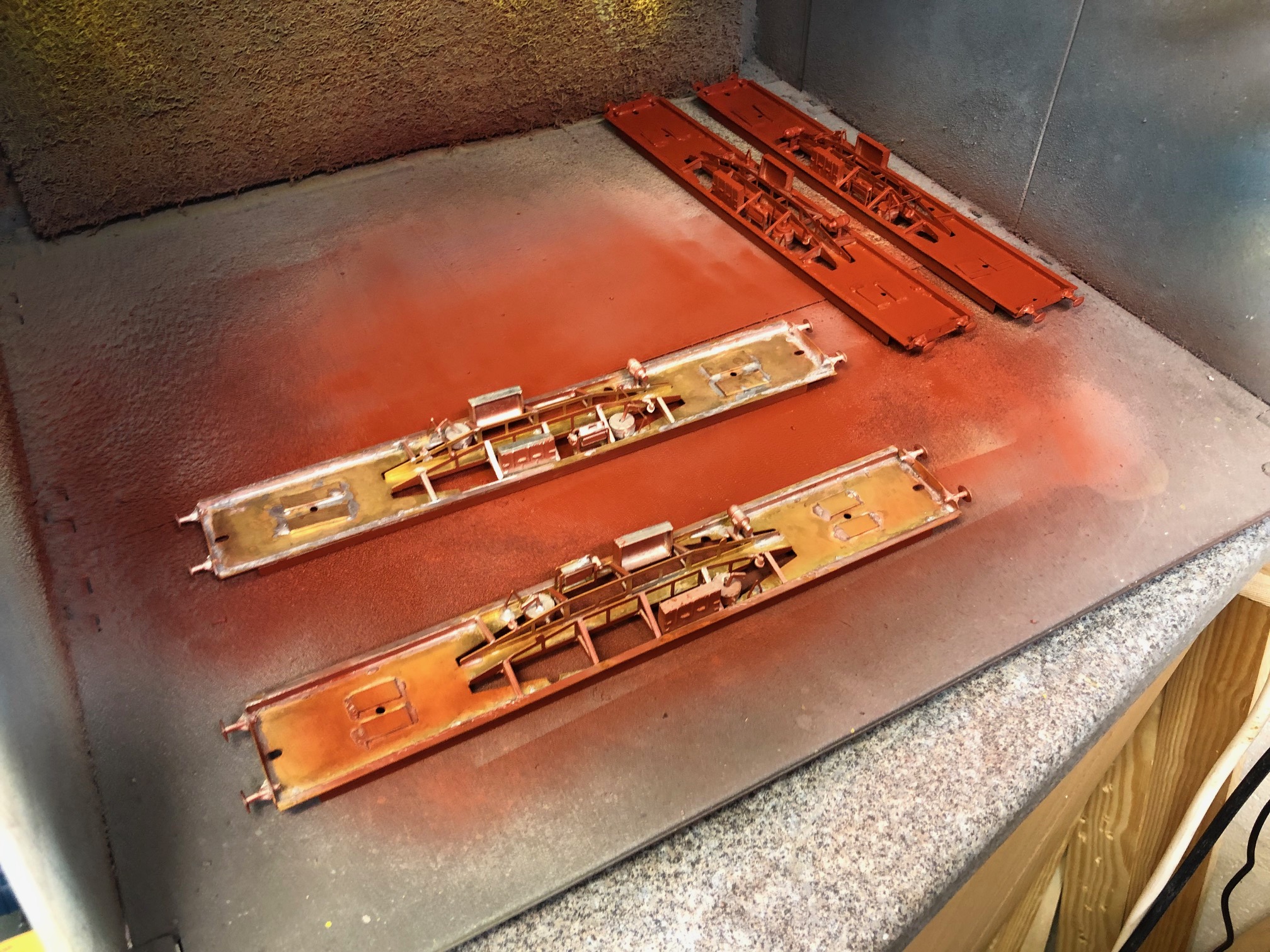
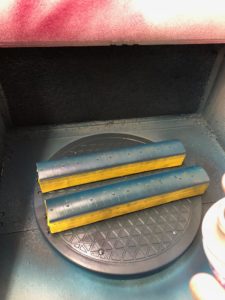
Into the final straight once the paint had fully dried I fitted glazing inside using canopy glue.
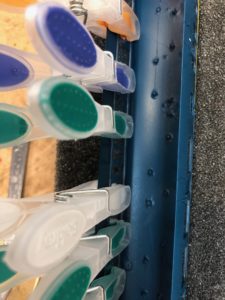
The interiors are from Replica, cut up to match the layout inside the coaches and painted. The transfers are a mixture of Fox for the no smoking, first class etc, and some bespoke transfers from 4D Model Shop. The latter enables whole ‘blocks’ of aligned numbers to be applied which is I find simpler than trying to line up individual numbers from a generic sheet on the side, plus it provides the unique end markings. It’s fairly expensive to produce a single A4 sheet, but I suspect that in the end it’s about the same as buying the variety of other sheets I would need.
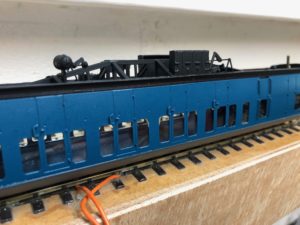
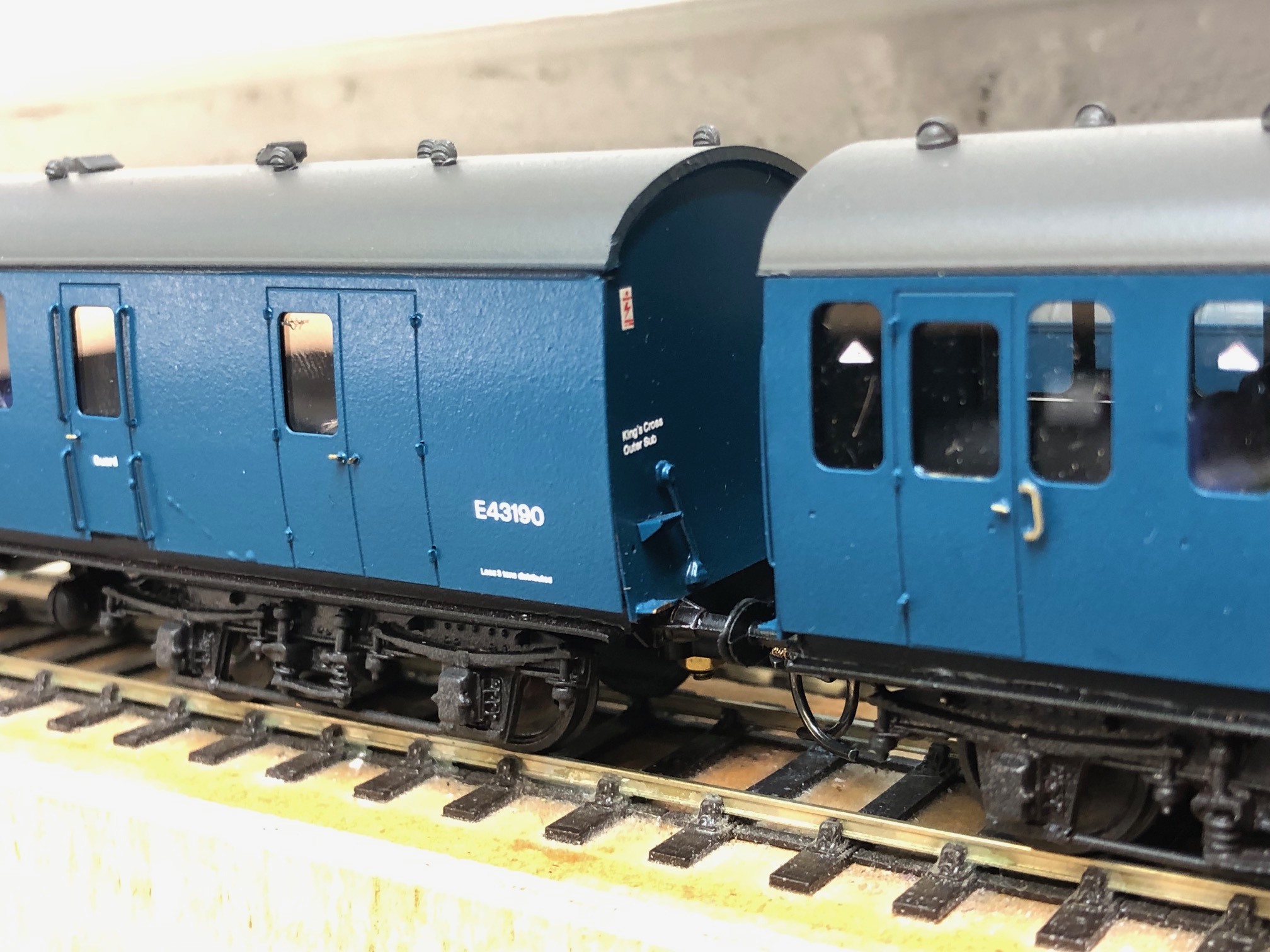
After fitting the Kadees, another check on the test track before giving them a run on the layout – where there worked smoothly with just a couple of adjustments to the coupling positions to avoid buffer lock on the tight reverse curves.
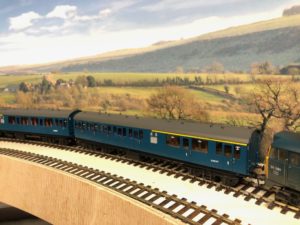
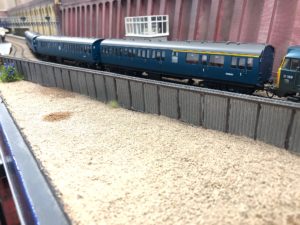
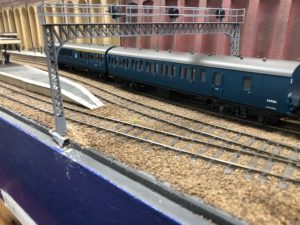
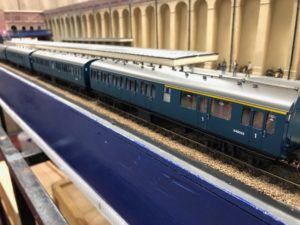
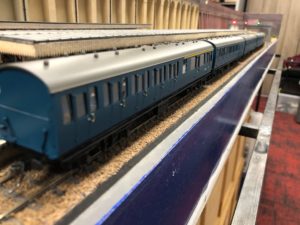
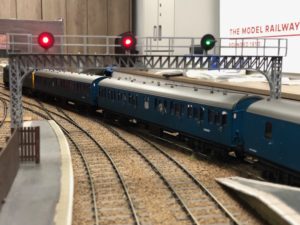
They’ve taken a while to build, but it’s been very worthwhile. Whilst it’s “the curse” of many a kit and scratch builder to find an RTR product is being produced just as you finish you own project, I don’t think that will ever beat the ‘I made it’ feeling.
Thursday Track Nights
We are open on Thursday evenings from 7pm to 9pm at our Keen House clubrooms. Visitors are welcome, please come along and introduce yourself.
Address:
Keen House, 4 Calshot Street, London, N1 9DA
Become a member
